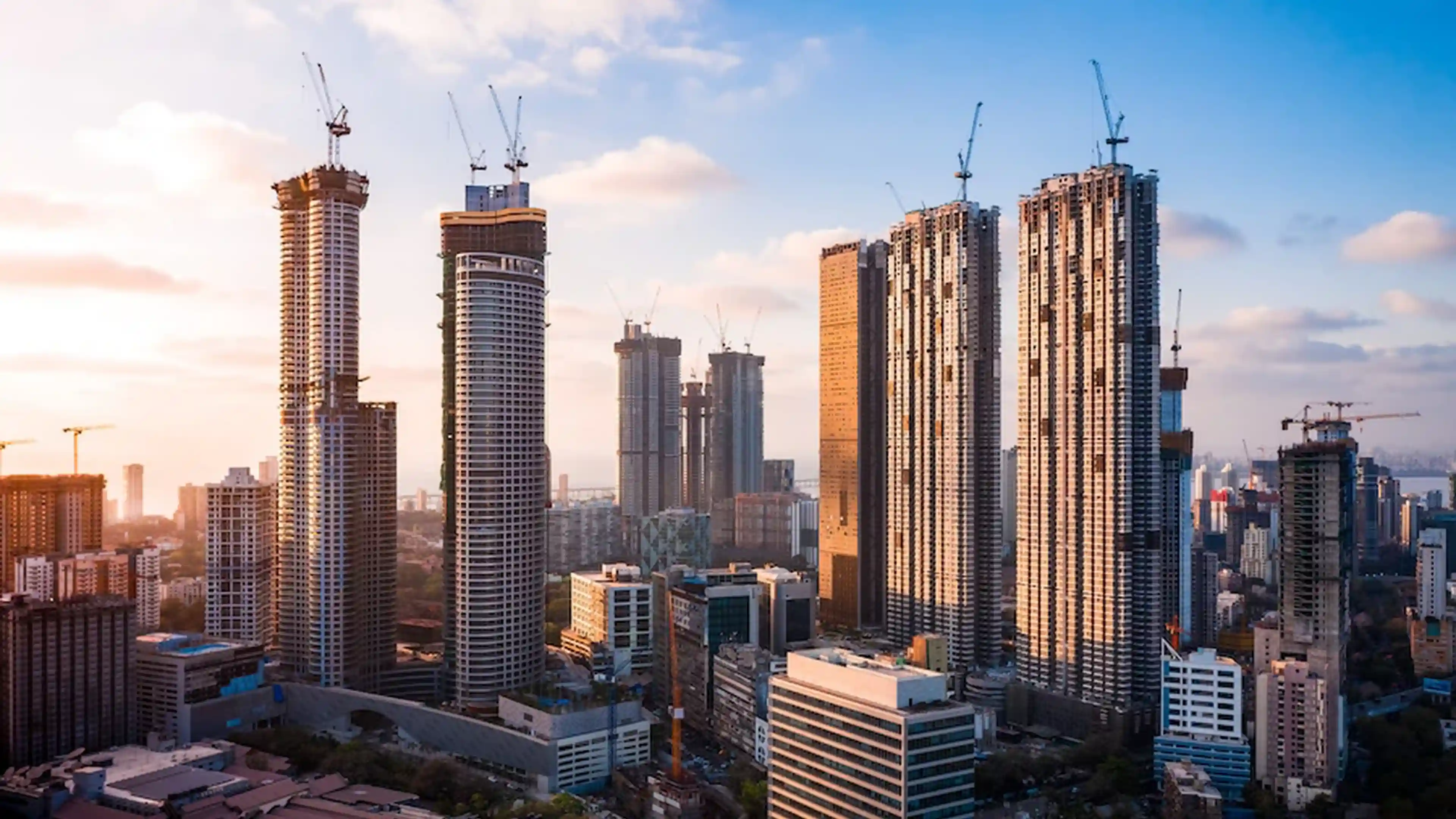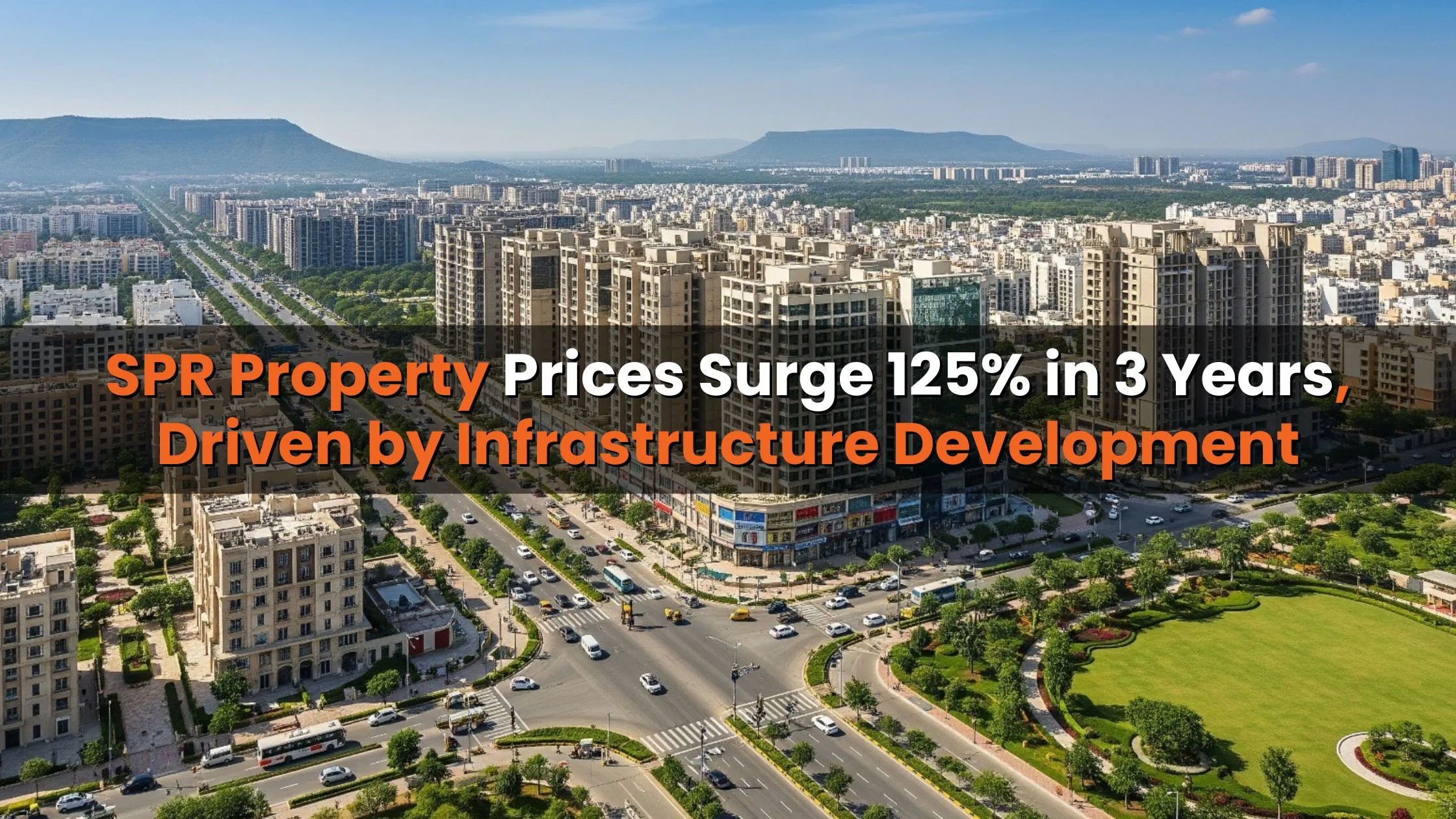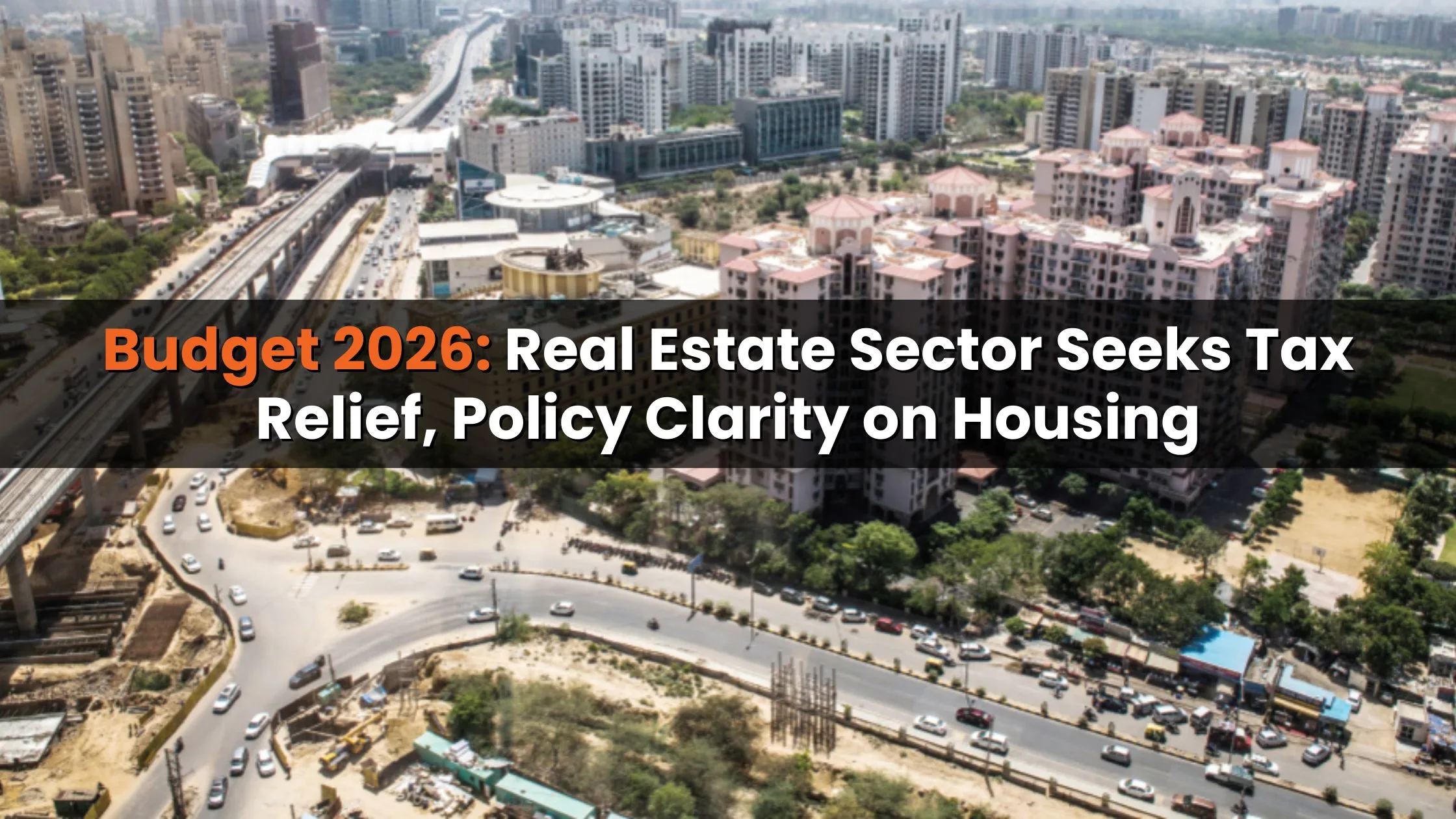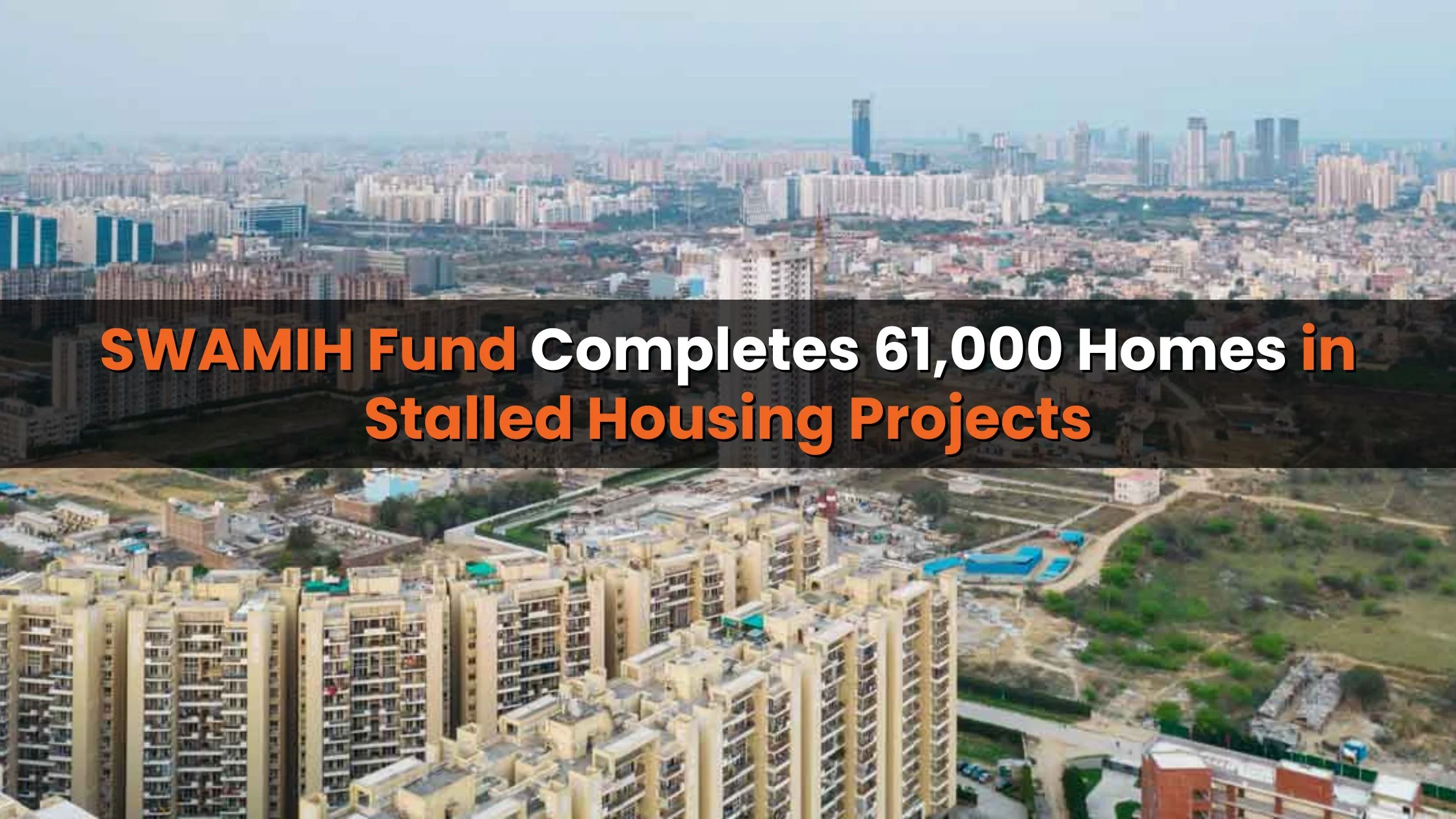Table of Content
The India real estate market is poised for one of the most transformative decades in its history. According to a joint report by CREDAI and Colliers, released at the 23rd edition of CREDAI NATCON in Singapore, the sector is projected to grow into a $5–10 trillion industry by 2047, contributing nearly 20% of the nation’s GDP.
This growth story is being fueled by urban expansion, infrastructure development, demographic shifts, digital adoption, and the rising emphasis on sustainability. The findings also forecast a doubling of housing sales, rapid expansion in Grade A commercial and warehousing space, and a significant rise in Real Estate Investment Trusts (REITs), which could account for up to 50% of the sector’s capitalization by 2047.
Key Growth Projections for 2047
The report lays out a compelling vision for the India real estate market over the next two decades:
- Housing sales are projected to double, reaching nearly 1 million units annually by 2047.
- The combined stock of Grade A office, industrial, and warehousing spaces is expected to surpass 2 billion sq ft.
- The REIT market share is likely to surge from the current 10% to 40–50% by 2047.
- Within REITs, the office segment will remain dominant, with penetration rising from 16% in 2025 to more than 60% by 2047.
Such growth will not only reshape India’s urban landscape but also establish real estate as one of the central pillars of economic development.
Also Read: Urban Footprint in 8 Cities Expands to 4,308 Sq Km, Pune Tops Growth
Why the India Real Estate Market is Expanding
Several structural drivers are propelling this transformation:
- Urban expansion – Rapid population growth in cities is fueling demand for housing, offices, and infrastructure.
- Infrastructure development – Government investments in highways, airports, and metro systems are creating new growth corridors.
- Demographic shifts – A young, aspirational population with rising incomes is boosting homeownership.
- Digital transformation – Technology is redefining real estate, from smart homes to digitized transactions.
- Sustainability imperatives – Green buildings and climate-resilient planning are becoming a priority for both developers and policymakers.
Adding to these forces, the India real estate market has attracted nearly $80 billion in institutional investments over the past 15 years. Notably, foreign investors have contributed 57% of these inflows, reflecting global confidence in India’s growth potential. Post-pandemic, domestic capital participation has also increased, strengthening the sector’s foundation.
Urbanization and Tier-II & III Cities’ Role
India’s urban story is just beginning. By 2050, nearly 900 million people (53% of the population) are expected to live in urban areas, up from the current 37%. To accommodate this shift, development must extend beyond Tier I cities like Mumbai, Delhi, and Bengaluru into Tier II and Tier III cities.
These emerging hubs are set to become the next growth engines, supported by:
- New economic corridors connecting smaller cities with industrial clusters.
- Retail and hospitality hubs rising in fast-growing urban centers.
- Township and affordable housing projects catering to first-time buyers.
According to Colliers, India will require $2 trillion in infrastructure investments by 2050 to support this urban expansion. The focus will not only be on physical development but also on sustainable, climate-resilient cities.
REITs and Market Transformation
One of the most striking shifts in the India real estate market is the rise of REITs. Today, REITs account for just 10% of real estate capitalization, but this figure is projected to climb to 40–50% by 2047.
Key highlights include:
- The office sector will continue to dominate REITs.
- REIT penetration in office assets will grow from 16% in 2025 to over 60% by 2047.
- REITs will attract greater institutional participation, bringing in global capital.
- Transparency and liquidity will improve, offering new opportunities for retail investors.
This evolution could make REITs one of the most important vehicles for real estate investment in India, aligning the market with global practices.
Developers and Investors’ Vision
At NATCON 2025, industry leaders painted an ambitious picture of the future.
- Shekhar Patel, President of CREDAI, emphasized that real estate will serve as the foundation of India’s journey toward becoming a developed economy. His vision is centered around building climate-resilient cities, affordable yet aspirational homes, and inclusive ecosystems.
- Badal Yagnik, CEO of Colliers India, noted that the India real estate market is positioned for decades of accelerated growth, driven by strong policy support and sustained demand.
- Developers and investors alike are aligning with sustainability practices, signaling a shift toward green, future-ready construction.
This vision is not just about building infrastructure but about redefining the quality of life for millions of citizens.
Challenges Ahead
Despite the optimism, the path forward is not without obstacles.
- Infrastructure spending, while growing at 13–14% annually, is still insufficient to meet the needs of rapid urbanization.
- The capital requirement is enormous, with more than $2 trillion needed by 2050 for urban infrastructure.
- Balancing rapid development with environmental sustainability remains a major challenge.
- Execution delays, regulatory complexities, and rising construction costs continue to test the resilience of the sector.
To fully realize the potential of the India real estate market, these hurdles will need to be addressed with proactive reforms and collaborative efforts between the government, developers, and investors.
Also Read: GST Rate Cuts: CREDAI Assures Cost Savings for Buyers, Bigger Impact in Tier-2 Cities
Global Collaborations and Sustainability Push
The international spotlight on India’s real estate sector was evident at CREDAI NATCON 2025, themed “$30 Trillion Economy by 2047: Powered by Real Estate Growth.” The event brought together over 1,200 stakeholders, including developers, policymakers, investors, and innovators.
A key highlight was the partnership between CREDAI Pune and Singapore’s BCA International (BCAI), aimed at promoting sustainable, high-quality building practices in India. This collaboration underscores the sector’s commitment to green construction and climate-conscious development, which will be vital for long-term competitiveness.
Conclusion
The India real estate market stands at the cusp of a historic transformation. With projections of reaching $5–10 trillion by 2047, the sector is set to play a pivotal role in shaping the country’s economic and urban future.
From doubling housing sales to expanding Grade A office and warehousing space, from boosting REIT participation to unlocking the potential of Tier II and III cities, the opportunities are vast.
While challenges such as infrastructure gaps and sustainability concerns remain, the vision laid out by CREDAI and Colliers offers a roadmap for progress. With supportive policies, global investments, and a renewed focus on inclusivity and sustainability, the India real estate market is not just building structures it is building the India of tomorrow.









Ans 1. According to CREDAI and Colliers, the sector is expected to grow into a $5–10 trillion industry by 2047, contributing around 20% of India’s GDP.
Ans 2. The expansion is fueled by urbanization, infrastructure development, rising incomes, digital adoption, and the growing push for sustainable and climate-resilient development.
Ans 3. Housing sales are projected to double, with nearly one million units sold annually, reflecting strong demand from India’s growing urban population.
Ans 4. REITs are expected to account for 40–50% of market capitalization by 2047, making them a central investment vehicle and boosting transparency and liquidity in the sector.
Ans 5. These cities are emerging as the next growth engines due to affordable land, new infrastructure corridors, and rising demand for housing, retail, and hospitality projects.
Ans 6. India will require nearly $2 trillion in infrastructure investment to support urban expansion and ensure sustainable, climate-resilient cities.
Ans 7. The industry faces hurdles like execution delays, regulatory complexities, high construction costs, and the need to balance rapid development with environmental sustainability.
Ans 8. Developers are adopting green construction, climate-conscious planning, and global best practices to ensure that growth remains future-ready and environmentally responsible.
Ans 9. Over the past 15 years, 57% of institutional investment has come from foreign players, showing strong global confidence in India’s long-term growth potential.
Ans 10. Leaders emphasized building climate-resilient cities, affordable yet aspirational homes, and inclusive ecosystems that will redefine urban living as India becomes a developed economy.